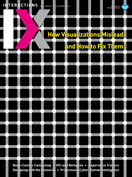Authors:
William Odom
Certain work in HCI has long argued for designing technologies to support a wide range of emotional, reflective, creative, and sensorial experiences beyond efficient task completion. These issues were central to my research program four years ago when I was asked to write a What Are You Reading? piece, and they remain so. Along this journey, I've discovered new, provocative works that have helped expand my thinking and revisited older works that inspire.
Nomadic Furniture: D-I-Y Projects That Are Lightweight and Light on the Environment By James Hennessey and Victor Papanek (original 1973; 2nd edition 2008) Hennessey and Papanek offer a highly visual how-to on building "lightweight furniture that folds, inflates, knocks down, stacks, or is disposable and can be recycled." Their expansive collection of sketches, diagrams, pictorials, images, and annotations projects a vision of domestic life that is customizable and intimate, yet also highly mobile (see the Entertaining Cube, one of my favorites). Hennessey and Papanek's design efforts expand the notion of home and how it is constructed. Their work is inspirational to my ongoing research with people living in and enacting diverse forms of domestic life—boat, vehicle, tiny home, and micro-loft dwellers, as well as those in nomadic situations. We aim to expand the HCI community's definition of home and, like Nomadic Furniture, explore how we might accommodate a wider, more diverse range of domestic circumstances and conditions through our design practice.

Slow Reader: A Resource for Design Thinking and Practice Edited by Carolyn F. Strauss and Ana Paula Pais (2016) Temporality shapes virtually all aspects of how we experience and construct the world around us. Time is the medium through which an interactive dialogue between a human and a computer begins, unfolds, and resolves. Since the early 2000s, HCI has more and more explored the temporal qualities and rhythms of everyday technologies. Several works have explored how slowness can operate as a generative frame to design technologies that sustain rich experiences of pause and reflection, and help us critically consider the role, place, and pace of technology in our lives. Yet this can be a challenging design space, both conceptually and practically. Edited by Carolyn F. Strauss and Ana Paula Pais, the Slow Reader presents the potentials, poetics, practices, and politics bound up in the notion of slowness. This collection of works makes it clear that slowness is more than merely a pace, offering insights into how this concept can help us challenge the norms of design practice, and debate, question, and reflect on the values that guide the things we make.

Slow Reader presents the potentials, poetics, practices, and politics bound up in the notion of slowness.
What Things Do: Philosophical Reflections on Technology, Agency, and Design By Peter-Paul Verbeek (2005) Why do people keep some things and discard others? Why do digital technologies so often fall into this latter, ephemeral category, and how can we support longer-term relations with them? Dutch philosopher of technology Peter-Paul Verbeek provides insights into how the nature of a designed thing actively shapes the quality and potential longevity of people's relationship to it. A decade ago, my master's thesis explored these ideas—in particular, how Verbeek's perspective can help frame research initiatives into designing technology for deeper forms of engagement not solely predicated on utilitarian or symbolic value. Since then, Verbeek's perspective has only grown in relevance. HCI researchers have increasingly turned to his post-phenomenological perspective as a lens toward viewing computational artifacts as designed material things that acquire lived-with qualities in indeterminate, emergent, and evolving ways.

America By Jean Baudrillard (1998) I read this book quite a while ago and decided to dig back into it. Baudrillard's frenetic, blurry, and hyperreal diary of his travels through the U.S. in the mid-1980s is an account of a country full of dualities, complexities, and oddities. While many aspects of this book are debatable, Baudrillard undeniably nails the magic, freedom, and exhilarating sense of abandon that comes from a road trip through the desert.

William Odom is an assistant professor in the School of Interactive Arts and Technology at Simon Fraser University in Vancouver, Canada. He has a Ph.D. in human-computer interaction from Carnegie Mellon University and was previously a Fulbright Scholar in Australia, a Design United Fellow in the Netherlands, and a Banting Postdoctoral Fellow in Canada. [email protected]
http://willodom.com/portfolio/
Copyright held by author
The Digital Library is published by the Association for Computing Machinery. Copyright © 2018 ACM, Inc.








Post Comment
No Comments Found